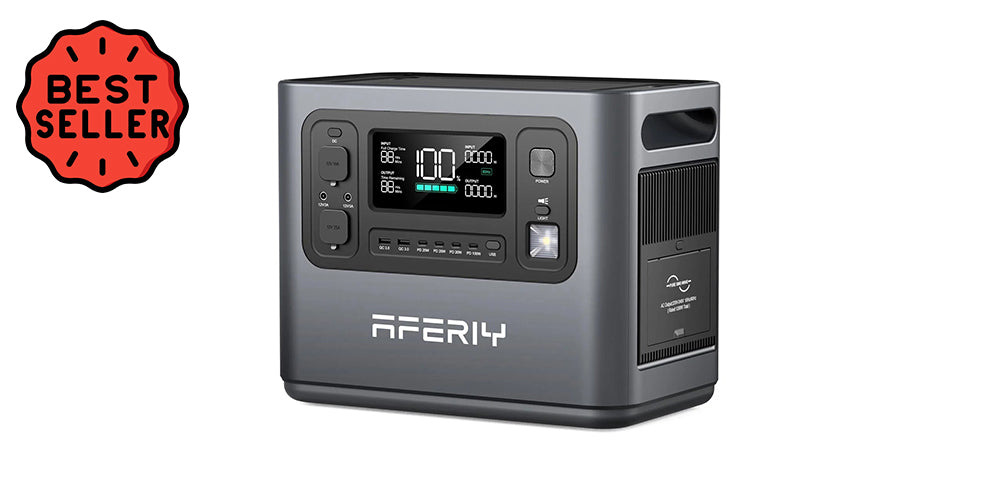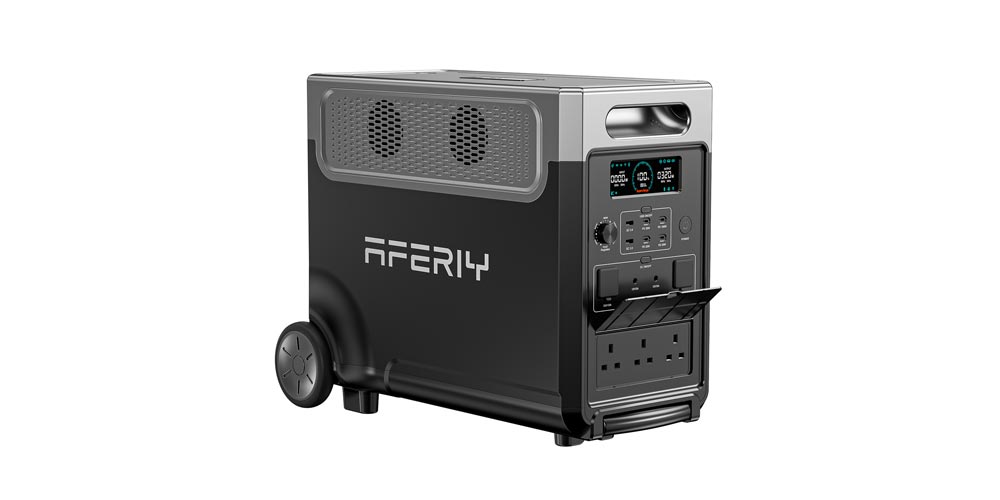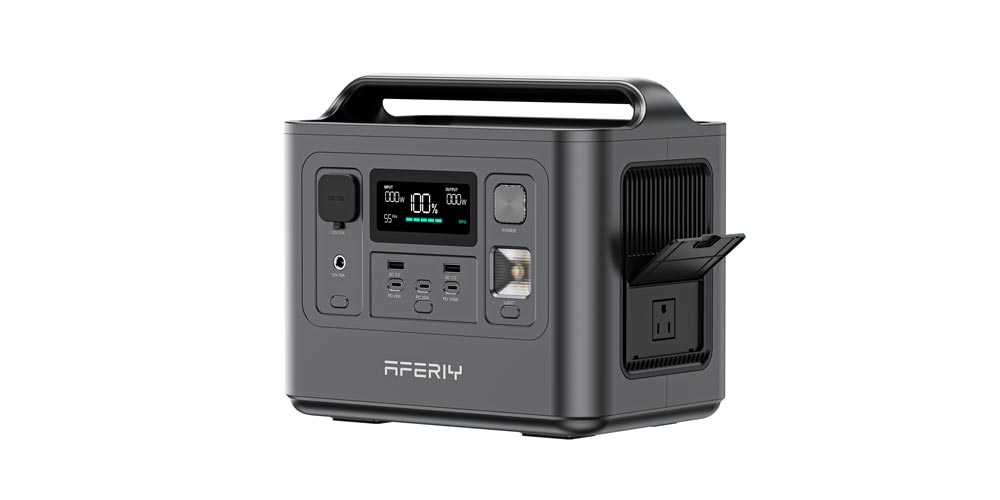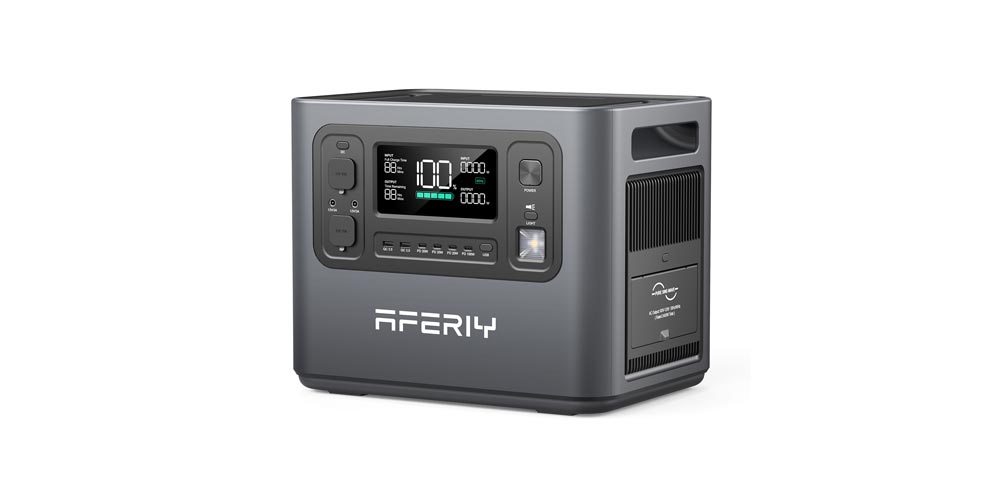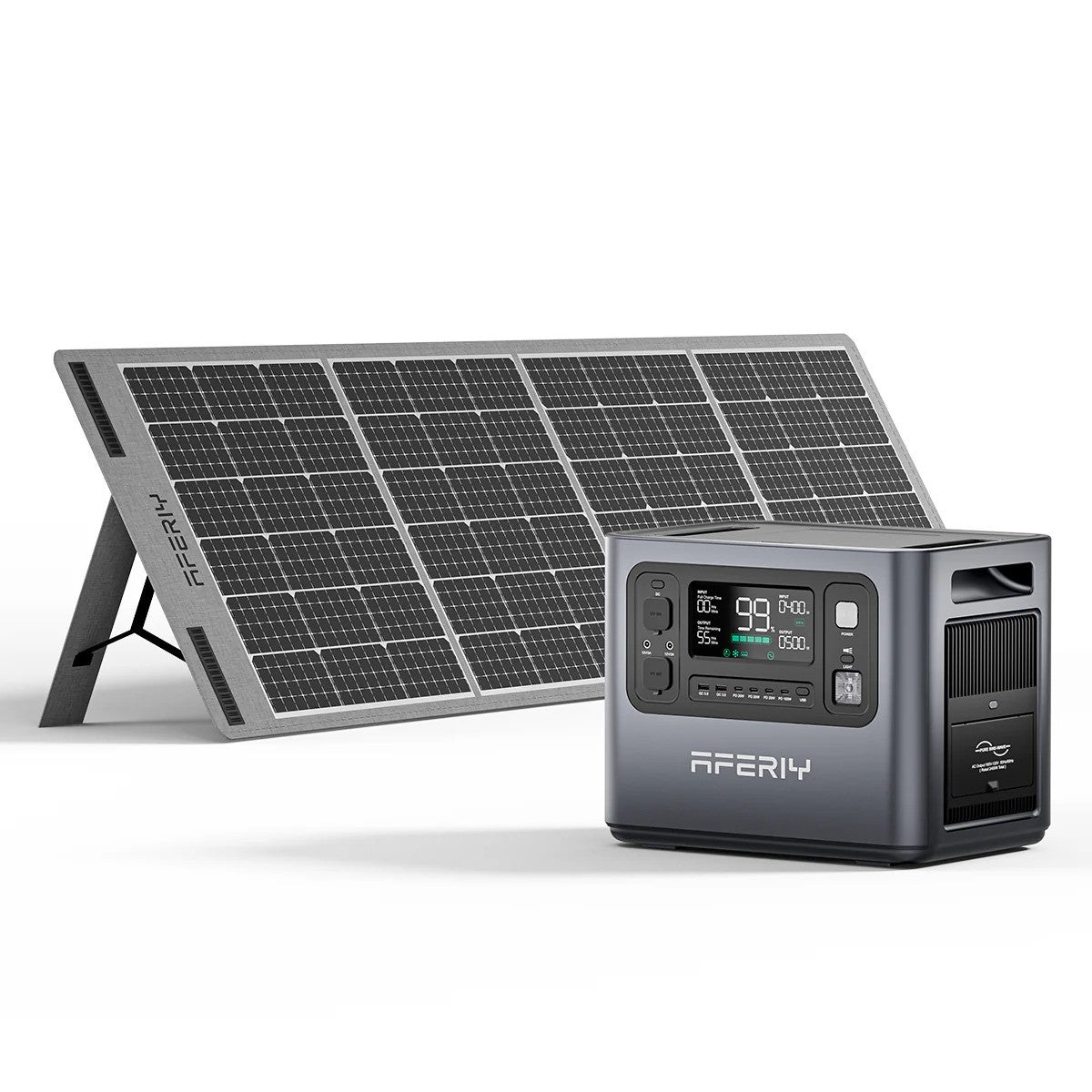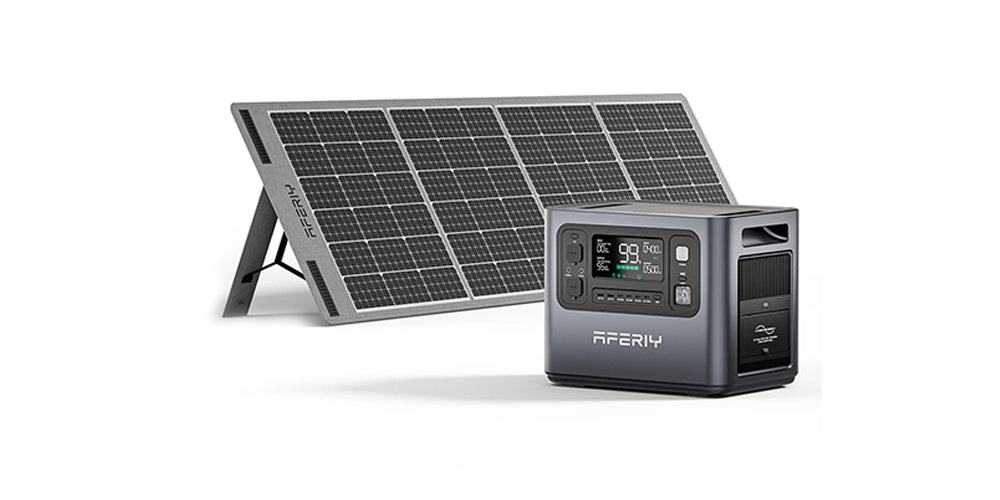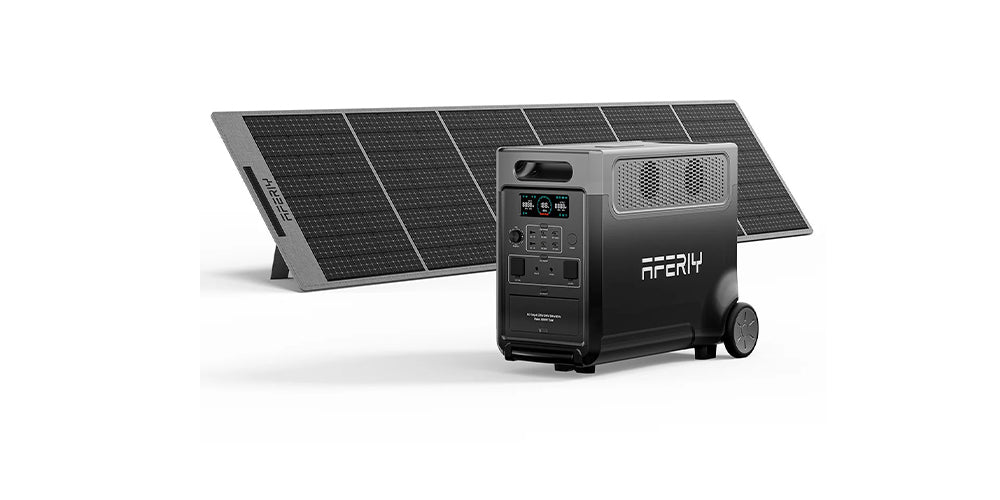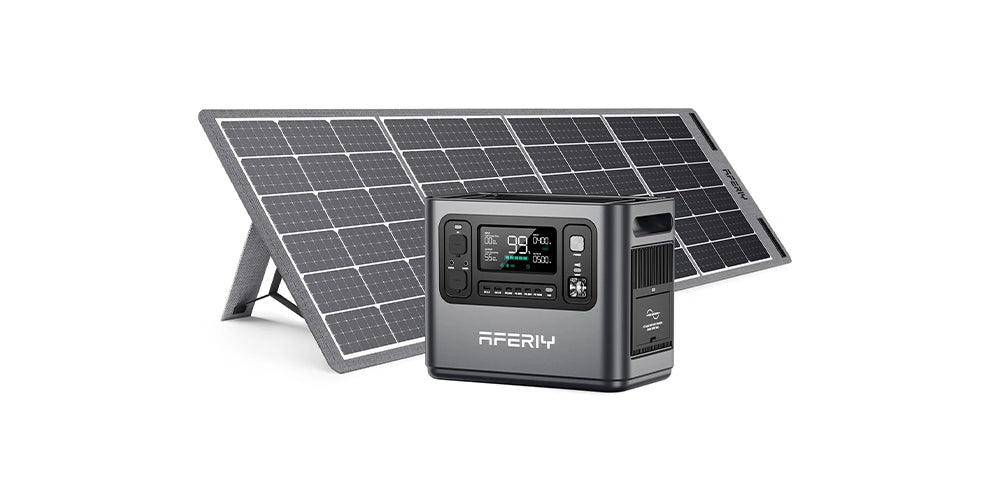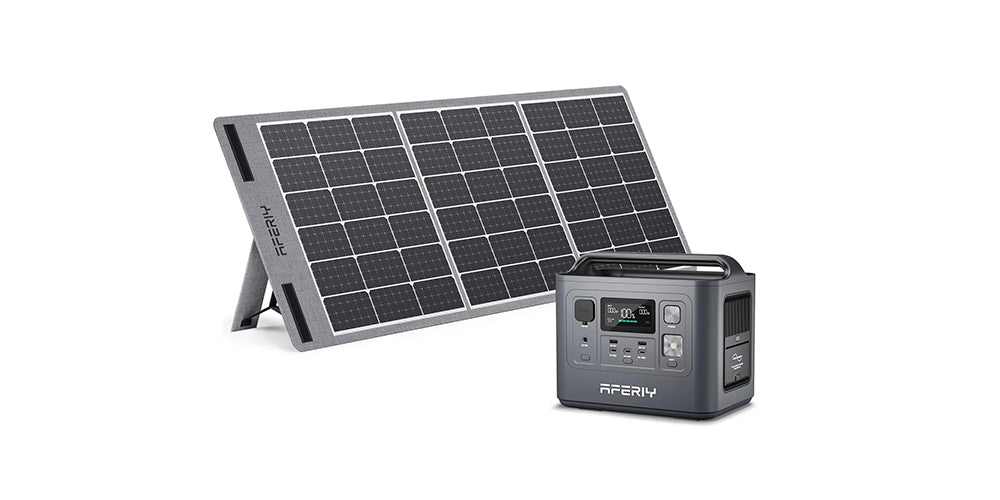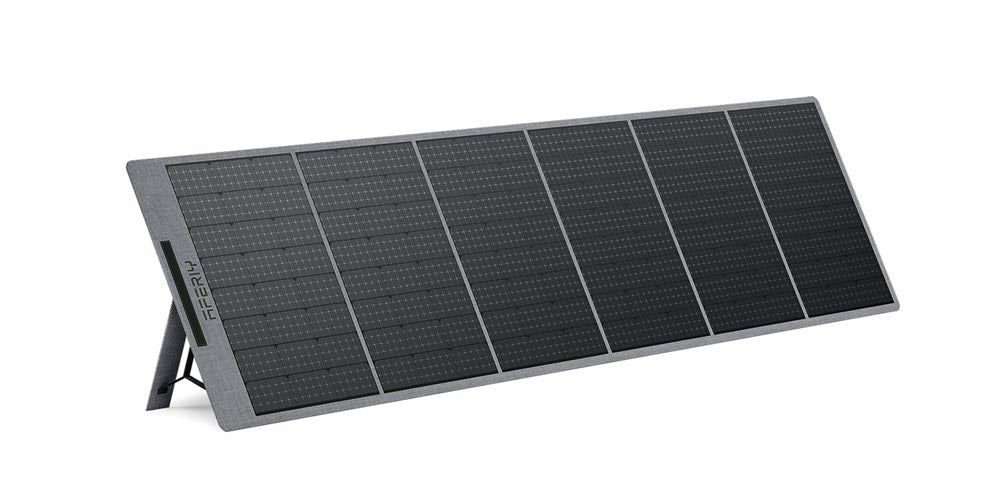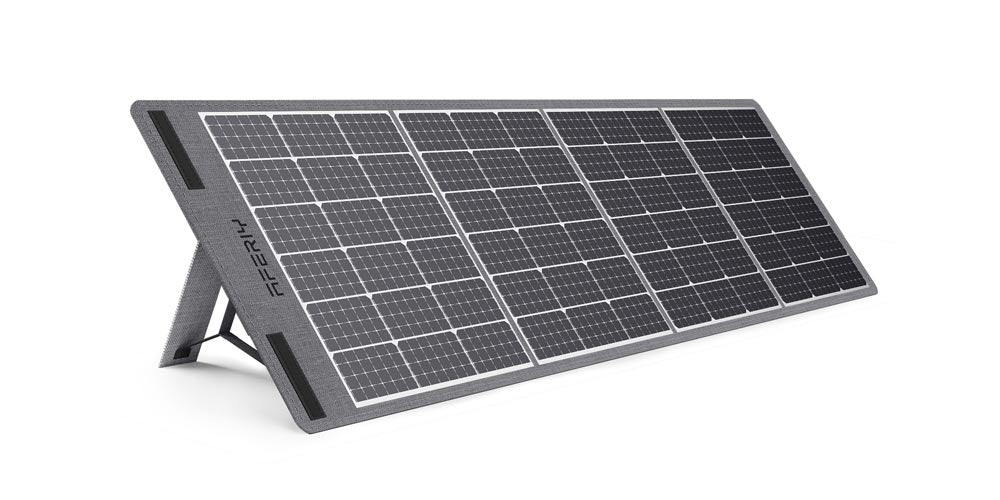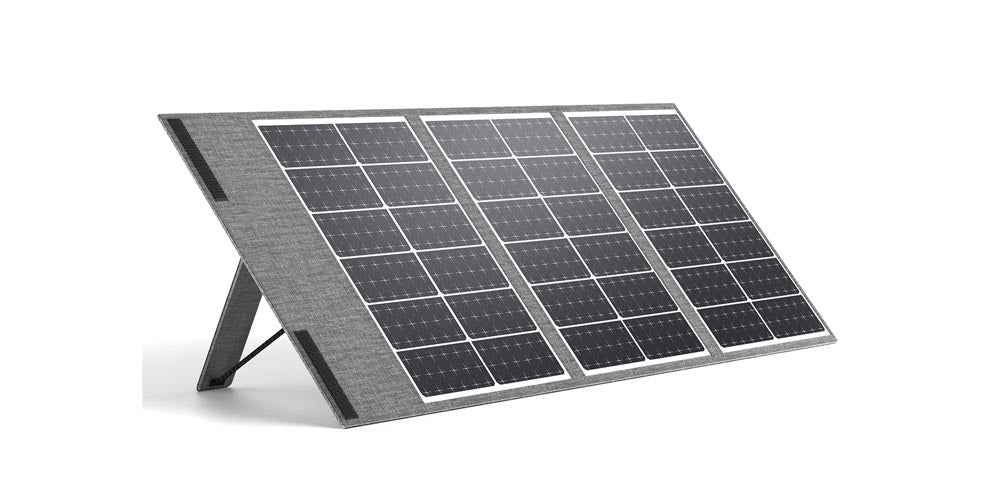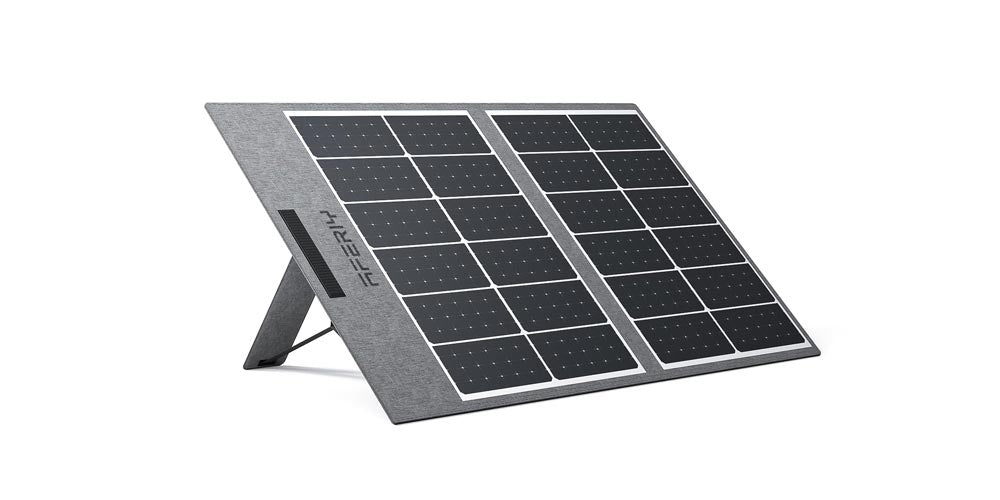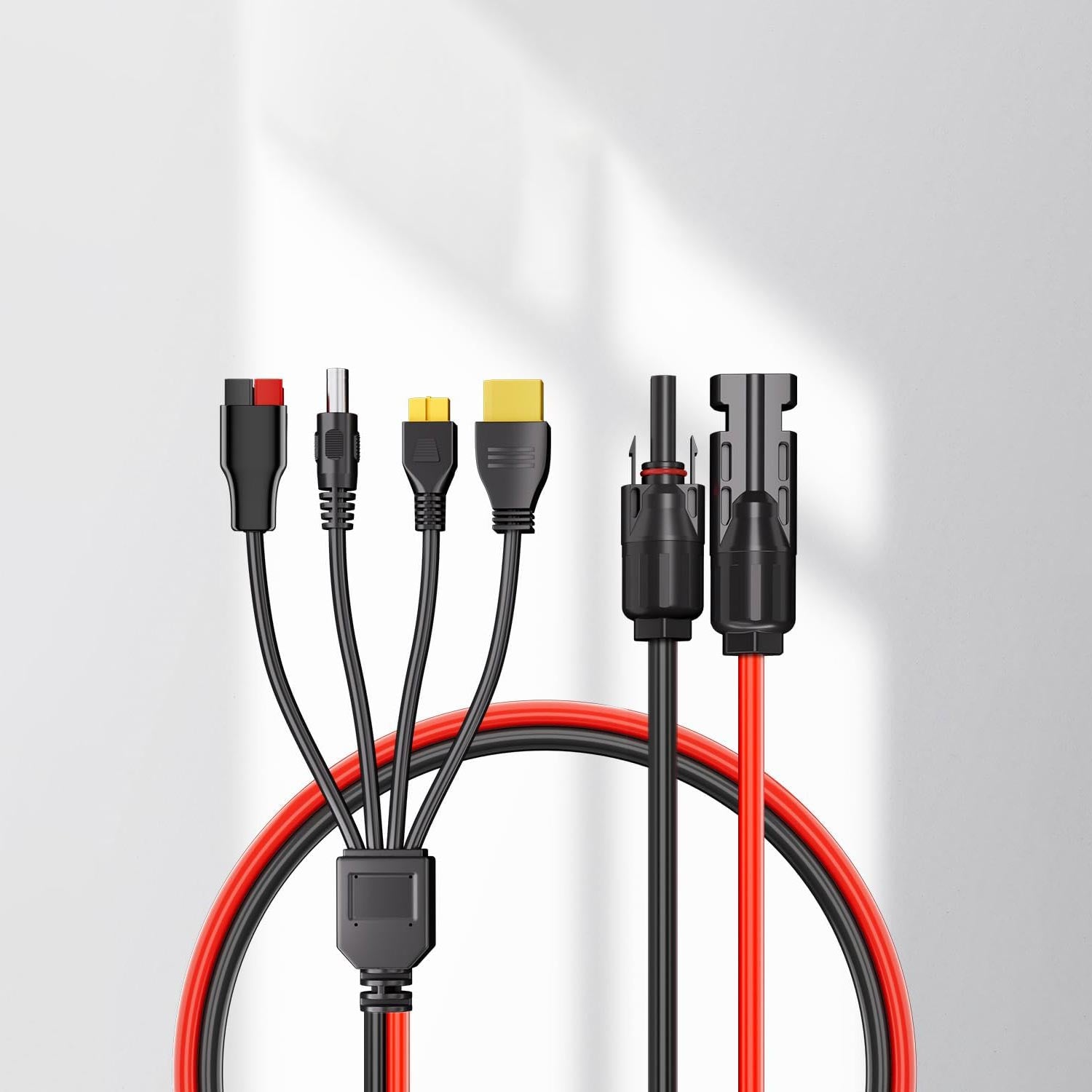Complete Guide to Flexible Solar Panels
As energy independence becomes a growing priority for travellers, campers and van owners, solar solutions are rapidly evolving. Moving away from bulky traditional rigid panels, a new generation of products is taking centre stage: the flexible solar panel. Lightweight, bendable, and easy to install, it’s winning over a growing audience.
But is it truly effective? What is it for? How much power do you need? And how do you pair it with a battery or portable power station? Let’s break it all down.
1. What Is a Flexible Solar Panel?
A flexible solar panel is a photovoltaic panel made using bendable materials such as amorphous silicon or monocrystalline cells encased in a soft polymer. Unlike rigid panels, these do not come mounted on an aluminium frame and can fit curved surfaces.
This makes them ideal for mobile use—on the roof of a campervan or motorhome, over a tent canopy, or even attached to a backpack. Their light weight allows for quick installation without permanent fixtures.
Flexible doesn’t mean fragile: despite their bendable design, these panels are made to be durable, waterproof and resilient. They can withstand shocks, vibrations, and harsh weather conditions, making them perfectly suited to outdoor use.
2. Key Advantages of Flexible Solar Panels
Lightweight and Adaptable
Flexible solar panels are known for their feather-light weight and ability to fit onto a variety of surfaces. For example, a 200W flexible solar panel typically weighs just 3 to 4 kg, compared to 7 to 10 kg for an equivalent rigid panel. Thanks to their frameless structure, they can conform to curved surfaces like the roof of a van or a boat. This flexibility makes them far easier to transport, handle and install—even in tight or awkward spaces.
Tool-Free Installation
Another major advantage is ease of setup. There’s no drilling or screwing required: flexible solar panels can be fixed using double-sided adhesive tape, Velcro strips, eyelets, suction cups or simply laid flat. This makes it easy to install them quickly without damaging the surface—be it a van roof, tent fabric or plastic cover.
Versatile for All Mobile Needs
Ideal for travellers, campers, hikers and boaters, flexible solar panels suit all kinds of mobile lifestyles. They can recharge a portable power station, run a 12V fridge, power LED lights, or charge phones and laptops. Their compact, foldable and lightweight format allows them to be easily stored in a car boot, drawer, or backpack, ready to deploy when the sun comes out.
Weatherproof and Reliable
Bendable but tough: flexible solar panels are built to last. Most models are waterproof (IP65 rating or higher), UV-resistant, and capable of withstanding rain, shocks, and temperature changes. That makes them reliable in all seasons and across all kinds of outdoor conditions.
Compatible with Portable Solar Equipment
Thanks to standard connectors like MC4 or XT60, flexible panels are compatible with most portable power stations on the market. You can simply plug them in to recharge a battery or power station—no inverter or external regulator required, as long as the station has a built-in MPPT controller.
3. What Are Flexible Solar Panels Suitable For?
Campervans and Converted Vans
The flexible solar panel for campervans has become an essential solution for vanlife enthusiasts and travellers using converted vans. Thanks to its flexibility, it perfectly adapts to the curved roofs of vehicles without requiring rigid frameworks or invasive mounting. This preserves the vehicle’s aerodynamics, visual discretion, and even fuel consumption.
Paired with a lithium battery designed for campervans or a portable power station, this type of panel can power a wide range of devices: 12V fridges, LED lighting, phones, tablets, Wi-Fi routers, and laptops, providing full autonomy on the move.
Here are the recommended power ratings based on needs:
100W flexible solar panel: perfect for light nomadic activities such as hiking, cycle touring, or light camping. It can recharge small devices (smartphones, GPS, headlamps) during the day. Lightweight and compact, it suits users looking for basic autonomy without bulk.
200W flexible solar panel: ideal for basic use (lighting, smartphones, small devices). Suitable for solo travellers or short trips.
400W flexible solar panel: perfect for medium autonomy including a fridge, a laptop, and some additional devices.
500W flexible solar panel: recommended for families on road trips or prolonged off-grid use with multiple devices running simultaneously.
Flexible solar panels are lightweight, easy to install without drilling, and can even be glued or attached with reinforced Velcro — a real solution for the constraints of fitted vehicles.
Hiking, Trekking, and Camping
For outdoor lovers and those seeking light autonomy, hiking solar panels often come as compact, foldable, or rollable mini panels that fit easily into a backpack. They are designed for extreme mobility where every gram counts.
They allow direct charging of:
Smartphones and tablets
GPS watches and headlamps
Small batteries or portable power stations
The benefit? No reliance on mains sockets, even in high mountains or deep forests.
Tiny Houses, Gardens, and Temporary Installations
Flexible solar panels also fit well in sedentary but off-grid or temporary electrical contexts:
Garden sheds or workshops without mains connection: the panel powers lighting, gardening tools, or security cameras.
Mobile work sites: nomadic artisans can recharge batteries for tools, phones, or laptops.
Tiny houses or isolated cabins: when rigid panel installation is complicated or the structure doesn’t allow drilling.
In all these cases, flexible solar panels are the simplest and quickest solution to deploy because they:
- Can be installed without a rigid frame
- Are weather-resistant
- Can be moved or stored if necessary
Whether for campervan trips, hiking, or off-grid garden installations, flexible solar panels meet needs for mobility, lightness, easy installation, and energy autonomy, adapting to various consumption levels with power options like 200W, 400W, or 500W.
4. How to Choose the Right Power for a Flexible Solar Panel?
The choice of power mainly depends on your daily energy needs, travel habits, and desired autonomy. Here’s a detailed guide on the most common power ratings and their typical uses:
100W: For minimalist and mobile adventurers
A 100W flexible solar panel suits activities like hiking, bikepacking, or light camping. This lightweight, compact, often foldable or rollable panel fits easily into a backpack or attaches to a bike or tent. It is ideal for charging small devices like smartphones, GPS watches, or headlamps during the day. Under full sun, it can produce 300 to 500 Wh daily, covering basic communication and lighting needs. However, its power is limited and not suitable for running a fridge or a larger power station, with performance dropping quickly in cloudy weather. Best used in conjunction with a small battery for energy storage.
200W: For light camping or small vans
A 200W flexible solar panel offers a good compromise for compact campervan travellers, light campers, or those seeking moderate autonomy. It can recharge a small power station that then powers LED lights, a mini 12V fridge, phones, and occasionally a laptop. Ideal for one or two people on a few days’ road trip. However, in bad weather or with heavier consumption, it may fall short, and an auxiliary power source like mains or alternator charging is advised.
400W: The ideal choice for self-sufficient campervans
The 400W flexible solar panel is a classic for campervan and converted van users wanting comfort and electrical independence. Paired with a power station of 1000 to 1500 Wh, it can run a fridge, lighting, multiple electronics (phones, tablets, laptops), and sometimes small kitchen appliances like low-power coffee makers. On sunny days, a 400W panel can generate up to 1.6 kWh daily, making it perfect for power stations such as the AFERIY P210 or P310. This power level offers an excellent balance between performance, space, and real autonomy for multi-day stays.
500W: For full autonomy and high energy needs
A 500W flexible solar panel is recommended for demanding travellers: families in campervans, digital nomads, or anyone with high energy consumption. It can power multiple devices simultaneously, such as TVs, laptops, powerful fridges, fans, or coffee machines. This power level generates enough energy daily to stay fully autonomous during long off-grid trips. It pairs perfectly with high-capacity stations like the AFERIY P310, capable of efficient energy storage and redistribution according to needs.
5. Flexible vs Rigid Solar Panels: Which One to Choose?
| Criteria | Flexible Panels | Rigid Panels |
|---|---|---|
| Weight | Lightweight (1 to 5 kg) | Heavy (5 to 20 kg) |
| Installation | Simple, mobile, no drilling | Requires rigid mounting |
| Efficiency | Good, slightly lower | Very good, more stable |
| Durability | 5 to 10 years (depending on use and quality) | 20 to 25 years (fixed installations) |
| Price | Cheaper for lower power ratings | Cost-effective long-term |
6. How to Pair a Flexible Solar Panel with a Portable Power Station?
A flexible solar panel for campervans performs best when combined with a portable power station like those offered by AFERIY:
Universal compatibility (MC4, DC, XT60 connectors depending on model)
Maximised efficiency thanks to built-in MPPT controllers
Portability: all fits in a boot or cupboard
Charging even under partial sunlight
Models like the AFERIY P110 (960Wh), P210 (2048Wh), or P310 (3840Wh expandable) are perfectly suited for these uses.
Conclusion: A Flexible and Smart Solar Solution
Flexible solar panels offer energy freedom without compromise. Whether you enjoy camping, own a campervan, live in a tiny house, or travel seeking autonomy, there is a model tailored to your needs. Their combination of lightness, adaptability, easy installation, and reliable performance make them a compelling choice for modern mobile energy solutions.

